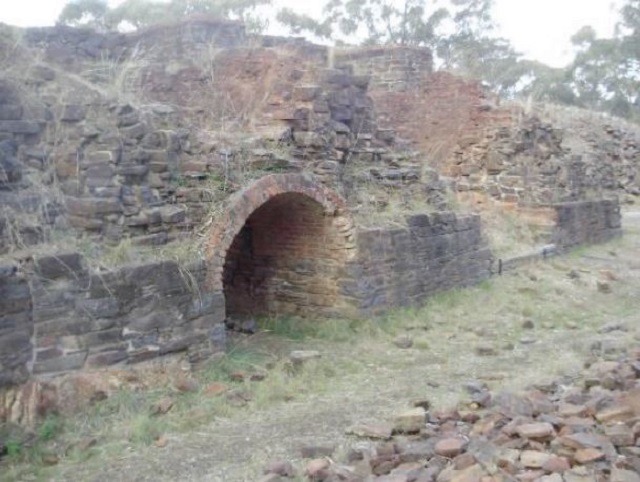Maldon Historic Area

Located in and around Maldon township, the Maldon Historic Reserve protects many relics of the gold mining era - abandoned shafts and tunnels, mullock heaps, quartz roasting kilns, stone walls, chimneys and machinery - as well as the box and ironbark forests once threatened by the constant demand for timber to feed steam boilers and shore up mine tunnels.
Things to see and do
Along with the many mining relics, the beauty of the forest attracts many walkers. Wildflowers are particularly attractive during spring especially in the heathy type forest at Smiths Reef.
If a long walk does not appeal to you, a ride on the Goldfields Railway will take you through Smiths Reef Forest past the Muckleford Bushland Reserve to Castlemaine. There is an interesting short walk from the Railway Station through the Reserve to the centre of town. It includes the relics of the rich Beehive Mine, including the Beehive Chimney.
Enjoy spectacular views from the heritage listed fire tower on Mt Tarrengower. Anzac Hill gives a good view of the historic township.
Caution - Keep to the tracks to avoid old mine workings including shafts and tunnels. Dam waters or mine waters may be contaminated and should not be drunk or used for active recreation. Fish caught in these dams should not be eaten. Always use water from a tap or safe supply.
History
Alluvial gold was discovered in the Maldon district by Captain John Mechosk, a German prospector, in 1853, resulting in a rush of some 20,000 diggers to the alluvial gullies around Maldon. By the following year, only 2000 remained.
After the initial rush, companies were set up to mine the rich, but some times elusive quartz reefs. Some alluvial mining was carried out using puddling machines powered by horse or steam. In the 1860s the amount of quartz reef gold produced at Maldon almost rivalled Bendigo, (Victoria's richest quartz mining field).
This prosperity was short lived (from 1870-1900), and the last deep mines closed in 1926. As gold production declined, the town's population dwindled. For most of the last century, Maldon experienced very little growth.
The miners left behind one of the best collections of accessible quartz reef mining relics in Victoria. Many of the mine sites, historic buildings and heritage features have been preserved.
This was not the end of Maldon gold. In the 1990s Triad Minerals NL and Alliance Gold NL extracted 60,000 ounces of gold from the open cut at Union Hill. Current mining and exploration licences cover the Historic Reserve. This period of mining is part of the Maldon Historic Reserve's recent history.
Notable Maldon Mines
The Beehive Chimney, a town landmark built in 1862, is 30 metres high and is listed on the Victorian Heritage Register. It is surrounded by an 1850s open-cut mine, winding, pumping and battery engine footings from 1860-1870s and the remains of a chlorination and cyanidation plant from the mine's last active period.
The South German Mine is known for its early use of cyanide and chlorination works to extract gold.
Carman's Tunnel was built in 1882 for the Great International Quartz Mining Co NL. The tunnel is unusually wide and high. Regular guided tours are available.
There is a walking track around North British Mine, which ceased operation in 1926.

Recent mining activity can be seen from viewing platforms at Union Hill and the Porcupine Flat treatment plant. At Union Hill modern mining technology has been used to construct the open cut and rehabilitate the hillside with native trees grown from locally collected seed.
The Box-Ironbark Forest
Once important to the miners for timber and firewood (Fentemans Mine needed 50 tons of dry firewood each week), the bush is now a valued part of Victoria's Box-Ironbark Forests.
Eighty-three percent of Victoria's original BoxIronbark forests has been cleared. These remnants support a diverse range of native plants and animals, including many threatened native species.
Mount Alexander Diggings Trail
Stroll around Maldon today and evidence of the gold rush is everywhere - in the buildings and in the surrounding bushland.
The Mount Alexander Diggings Trail is a guide to the remarkable relics of the gold rush. It provides a range of linked, interactive attractions involving gold mining sites and relics, historical accounts and images, modern gold mining operations, the extensive box-ironbark forest and several significant heritage towns.
The best way to find your way around the Diggings is to begin with a stop at the Visitor Information Centre in Maldon or Castlemaine.
Facilities and Accommodation
Picnic areas are located at Butt's Reserve, North British Mine, South German Mine, Carman's Tunnel and Mt Tarrengower. Camping is permitted at Butt's Reserve, but there are few facilities. Bed and breakfast, self contained cottages, hotel and motel accommodation is available in Maldon. Caravan parks are located at Maldon, Welshmans Reef and Baringhup.
Access for Dogs:
Dogs must be on a leash.
How to get there
Maldon Historic Area is 136km north west of Melbourne. To get there, turn off the Calder Highway toward Castlemaine and Maldon at Elphinstone.
Location
Parkins Reef Road, Maldon 3463 Map
Web Links
→ Maldon Historic Area (Parks Victoria)
→ Maldon Historic Area - Park note (PDF)
→ Heritage story - Ghosts of a noisy past, Maldon (PDF)
→ Heritage story - Carmans Tunnel, Maldon (PDF)











